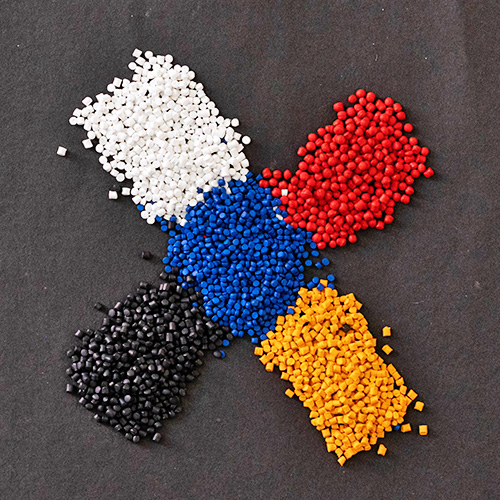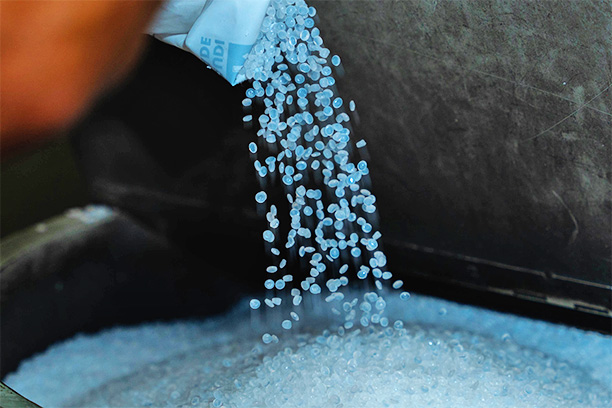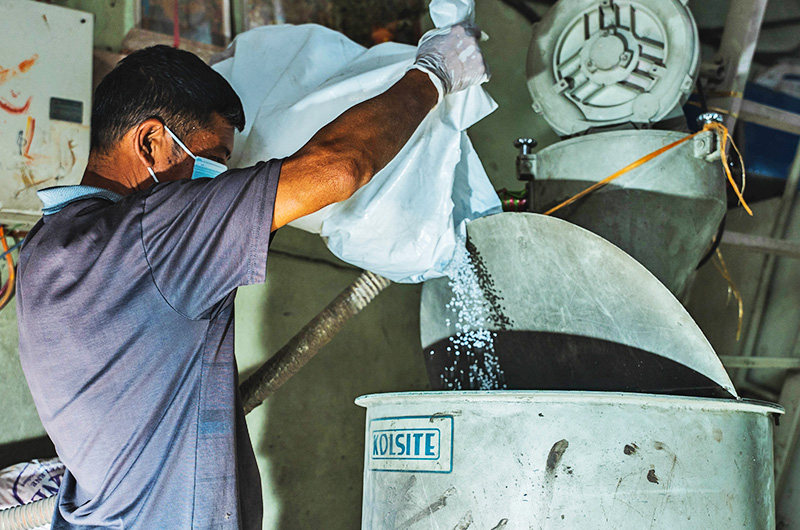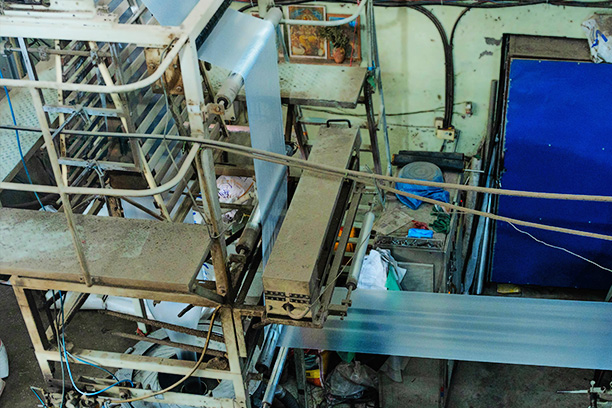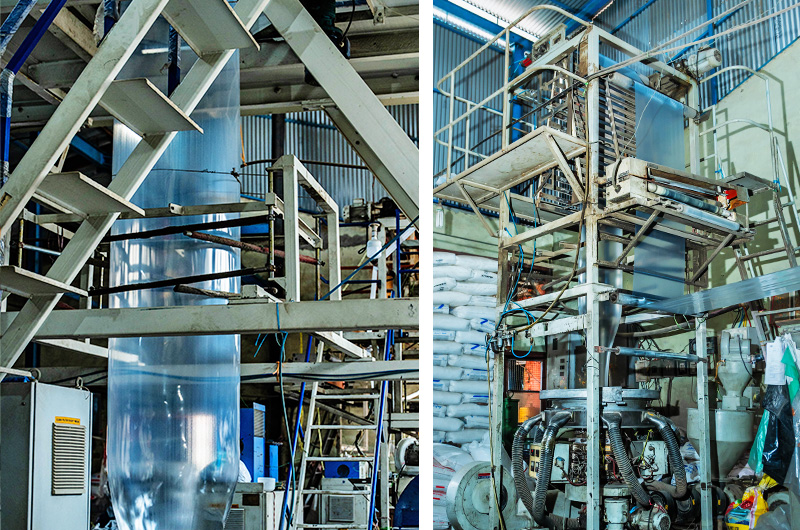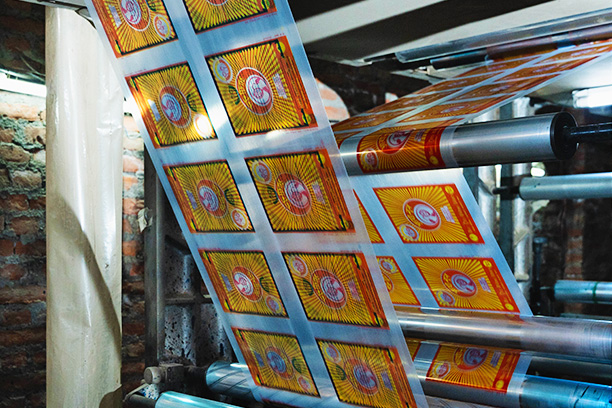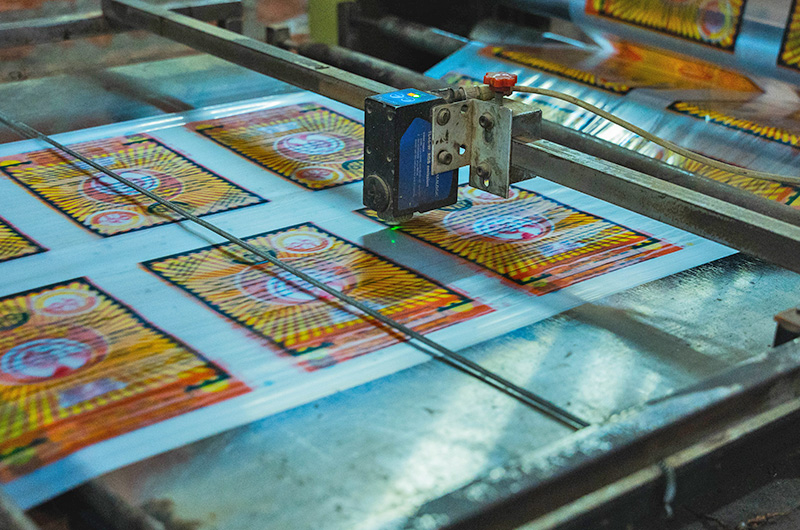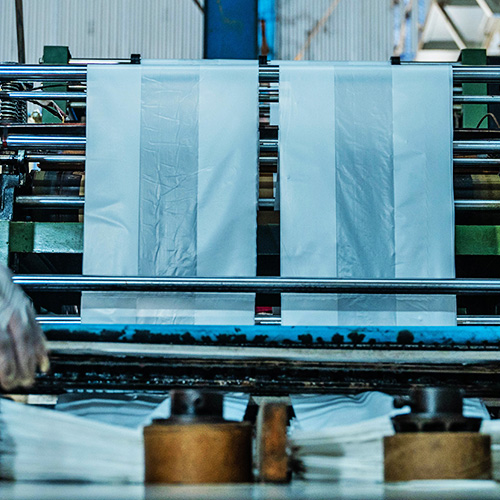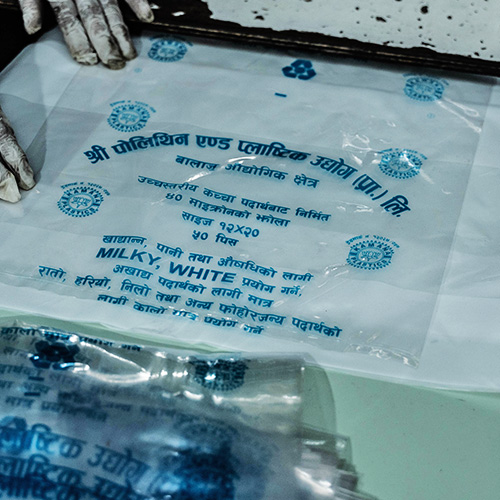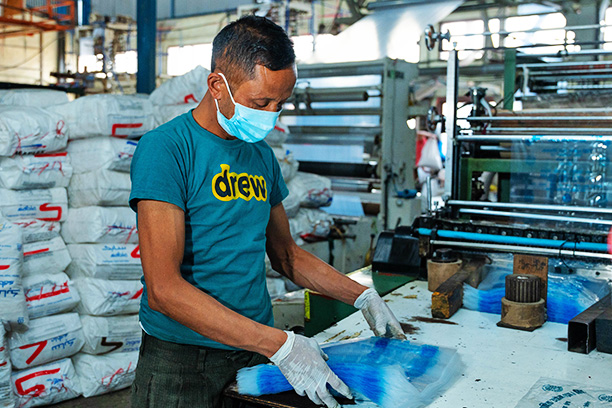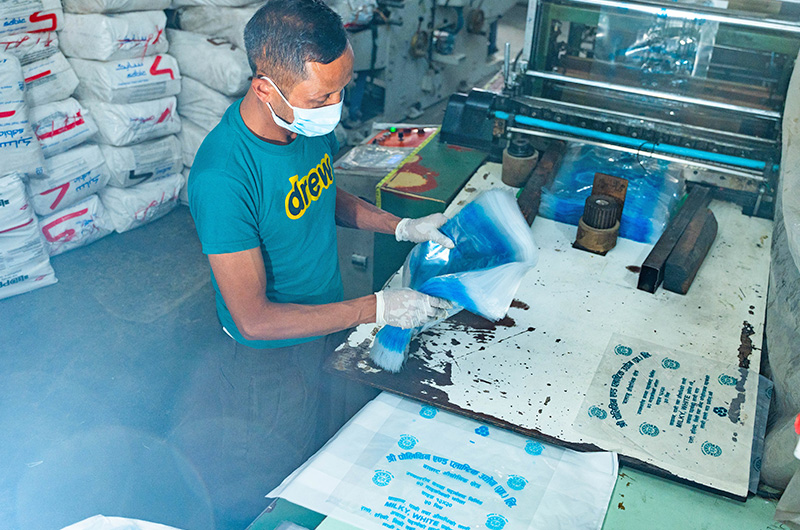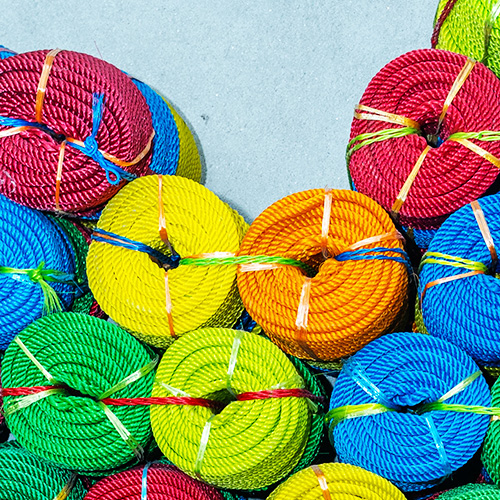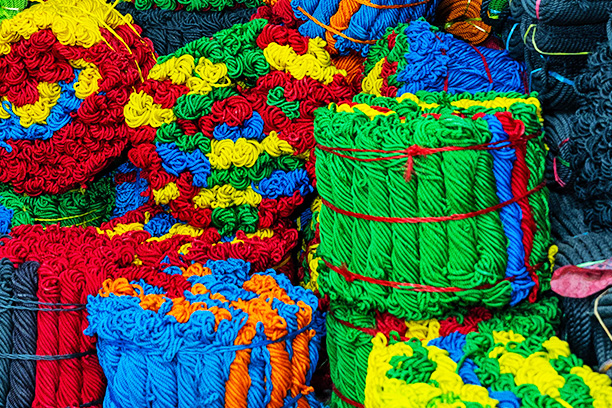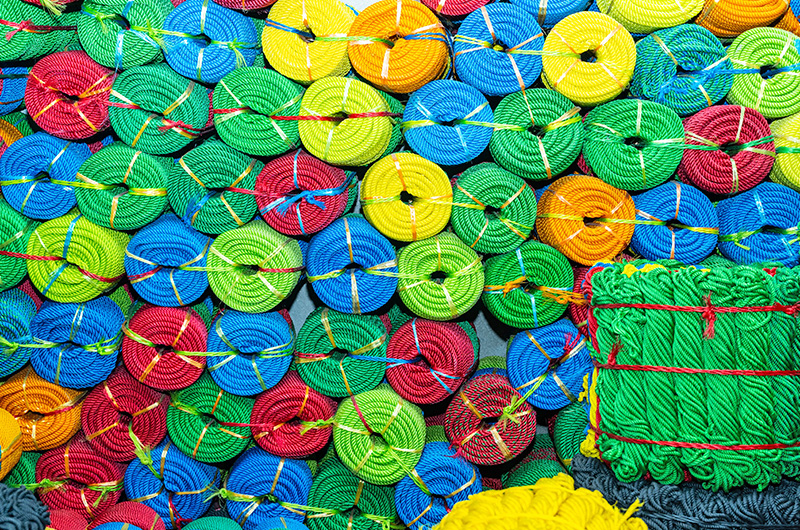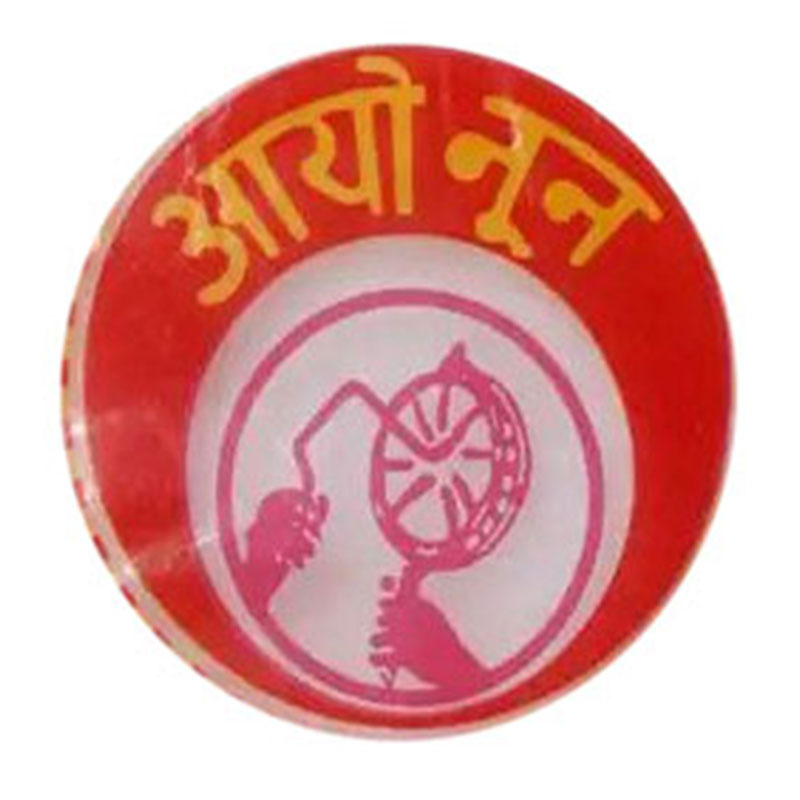01. Granule - Mixing of Plastic Pellets
The first step in the production of polythene bags is the preparation of granules. Granules are small plastic pellets that serve as the raw material for bag production. The process starts by selecting the appropriate plastic resin, such as high-density polyethylene (HDPE) or low-density polyethylene (LDPE). The resin is then fed into a Film Extrusion Machine, also known as an extruder.
Inside the extruder, the resin undergoes a melting process. The resin pellets are heated and melted, transforming into a molten plastic mass. This molten plastic is forced through a die, which shapes the plastic into a continuous thin film. As the film emerges from the die, it is cooled using air or water, solidifying it into a thin, flat sheet of polythene.
02. Rolling Film
Once the polythene film is extruded, it needs to be rolled into large rolls for further processing. The extruded film is passed through a series of rollers and guided onto a winding mechanism. This mechanism winds the film onto a large roll, ensuring that it is tightly wound and properly aligned. The rolling process allows for efficient storage and handling of the film during subsequent stages.
Additionally, if any printing is required on the film, this step may involve a Flexo Printing Machine. The printing machine can apply ink or designs onto the surface of the film as it is being rolled, enabling customization and branding of the polythene bags.
03. Printing Film
In some cases, the polythene film may require additional printing processes to add designs, logos, or any necessary information. A Bag Making Machine is utilized for this purpose. The rolled film is fed into the bag-making machine, where it passes through a printing mechanism.
The printing mechanism consists of cylinders or plates that contain the desired designs or patterns. As the film moves through the machine, ink is applied to the cylinders or plates and transferred onto the film's surface, resulting in the desired printed designs. This step allows for the customization of the bags according to customer requirements.
04. Flat Bag
Once the film is printed, it is ready to be converted into individual bags. The Bag Making Machine is again employed in this step. The printed film is fed into the machine, which automatically cuts it into individual bag-sized pieces. These pieces are then folded in half and sealed along the sides using heat or pressure, creating flat bags.
To enhance functionality, the bag-making machine may include a punching mechanism. This mechanism can punch holes for handles or create handle slits, enabling the bags to be easily carried. The punching process is typically synchronized with the bag-sealing process to ensure accurate placement of the handles or holes.
05. Carry Bag or T-shirt Bag
At this stage, the flat bags can be further processed into specific bag types, such as carry bags or T-shirt bags. Carry bags are usually larger and have handles, making them suitable for carrying heavier items. T-shirt bags, on the other hand, have a distinctive shape resembling a T-shirt, with integrated handles.
To manufacture carry bags, the Bag Making Machine has adjusted accordingly. Handles may be added by attaching pre-made handles to the bag during the sealing process. Alternatively, the machine may include a handle-punching mechanism, which creates handle holes or slits directly on the bag's surface during the bag-making process.
For T-shirt bags, the Bag Making Machine is modified to produce the characteristic shape. The machine cuts the film into a specific outline, resembling a T-shirt, with integrated handles. The bags are then sealed along the sides and at the bottom to ensure strength and durability.
06. Waste Recycle
During the production process, waste material such as scraps, misprinted film, or rejected bags may accumulate. To minimize waste and promote sustainability, these plastic materials can be recycled. Plastic Recycling Machines are used to process the waste plastic, which is sorted, shredded, melted, and reprocessed into new plastic granules or other plastic products. These plastic granules are recycled into nylon and plastic rope. These waste management practices in the polythene bag production process help minimize environmental impact and promote sustainability by reducing waste generation and maximizing resource efficiency through recycling.
Our Process
Our Clients We Are Trusted By
The Leading Industries in the country
